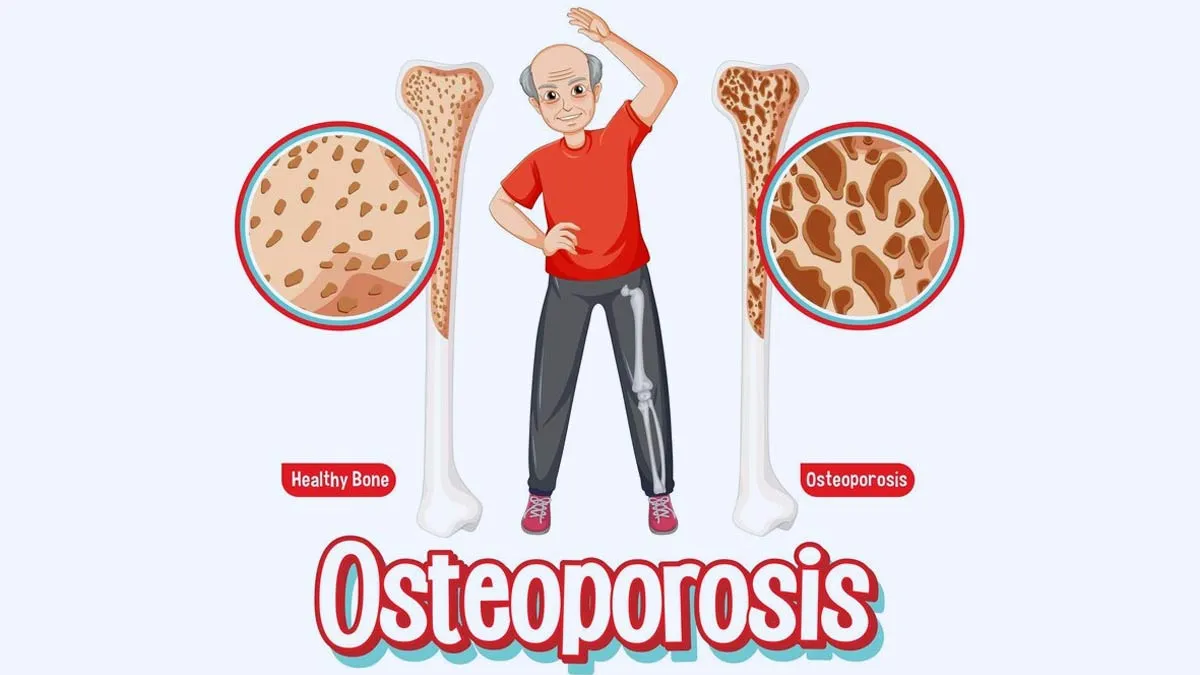
Osteoporosis, often called the “silent disease,” weakens bones and increases the risk of fractures. This condition progresses without obvious symptoms, making early prevention and awareness crucial. While it can affect both men and women, there are notable differences in how each gender experiences the risk and progression of osteoporosis.
Table of Content:-
Women are generally at a higher risk due to hormonal changes and life events such as menopause and pregnancy. Men, though less frequently diagnosed, are not immune, especially when lifestyle factors and certain medical conditions come into play. Understanding these differences is essential to effectively prevent and manage osteoporosis, ensuring stronger bones and better overall health for years to come.
To understand how the risk factors differ for men and women, the OnlyMyHealth team interacted with Dr Manan Vora, Orthopaedic Surgeon and Sports Medicine Expert, Mumbai.
Understanding Osteoporosis
Dr Vora explains, “Osteoporosis is a condition where bones become weak and more likely to break. It’s a silent disease that develops over time without obvious symptoms.” This condition typically manifests in later stages of life, but the groundwork for bone health is laid during the early years.
Bone density peaks by age 30 in both men and women. Beyond this age, bone remodelling, the natural process where old bone tissue is replaced by new, begins to favour bone loss. However, the rate and extent of bone loss differ between men and women.
Also read: Pollution And Osteoporosis: Do People Living In Cities Run A Higher Risk?
Why Women Are at Higher Risk

“Women are more prone to osteoporosis due to factors like hormonal changes during menopause and calcium deficiency during pregnancy and lactation,” says Dr Vora.
- Post-Menopausal Hormonal Decline: Oestrogen, a hormone critical for maintaining bone density, drops sharply after menopause. Women can lose 1%–1.5% of their bone density annually after menopause, leading to a total bone loss of 20%–30% by age 70.
- Pregnancy and Lactation: These life stages can deplete calcium reserves, further weakening bones.
Osteoporosis in Men

While less common, osteoporosis does affect men. By the age of 70, men lose 15%–20% of their bone mass, albeit at a slower annual rate of 0.3%–0.5% starting in their 50s. Dr Vora highlights some key risk factors:
- Lifestyle Habits: Excessive alcohol consumption and smoking can compromise bone health.
- Medical Conditions: Conditions such as hypogonadism (low testosterone) or chronic kidney disease, along with long-term use of corticosteroids, can increase risk.
Also read: Osteoporosis Can Weaken Your Bones: Here's How You Can Reduce The Risk
Shared Risk Factors for Both Genders

Certain factors elevate the risk of osteoporosis in both men and women:
- Sedentary Lifestyle: Lack of weight-bearing or resistance exercises reduces bone strength.
- Nutritional Deficiencies: Insufficient calcium and vitamin D intake hampers bone formation and maintenance.
- Family History: Genetics can play a significant role in predisposing individuals to osteoporosis.
Prevention Strategies
Despite the inevitability of some bone loss with age, osteoporosis is largely preventable. Dr Vora emphasises, “If you take care of your lifestyle and eating habits, it’s easily avoidable.”

Prioritise Calcium and Vitamin D
Consume 1,000–1,200 mg of calcium daily. Foods like dairy products, leafy greens, and fortified foods are excellent sources. Ensure 600–800 IU of vitamin D daily through sun exposure, diet, or supplements.
Engage in Regular Exercise
Start weight-bearing activities like walking, jogging, or resistance training as early as your 20s to build and maintain bone density.
Monitor Bone Health
Regular screenings for bone density are crucial, particularly after age 60. Women should monitor hormonal levels during and after menopause.
Avoid Harmful Habits
Quit smoking and limit alcohol consumption, as both interfere with calcium absorption and bone strength.
Conclusion
Dr Vora underscores the importance of early intervention: “Bone loss is inevitable as we age, but osteoporosis doesn’t have to be.” By adopting a proactive approach, prioritising nutrition, staying active, and addressing risk factors early, both men and women can significantly reduce their risk of developing osteoporosis.
Osteoporosis is a reminder that caring for our bones is a lifelong commitment. By understanding the differences in risk factors and taking preventive measures, we can ensure stronger, healthier bones at every stage of life.
Also watch this video
How we keep this article up to date:
We work with experts and keep a close eye on the latest in health and wellness. Whenever there is a new research or helpful information, we update our articles with accurate and useful advice.
Current Version